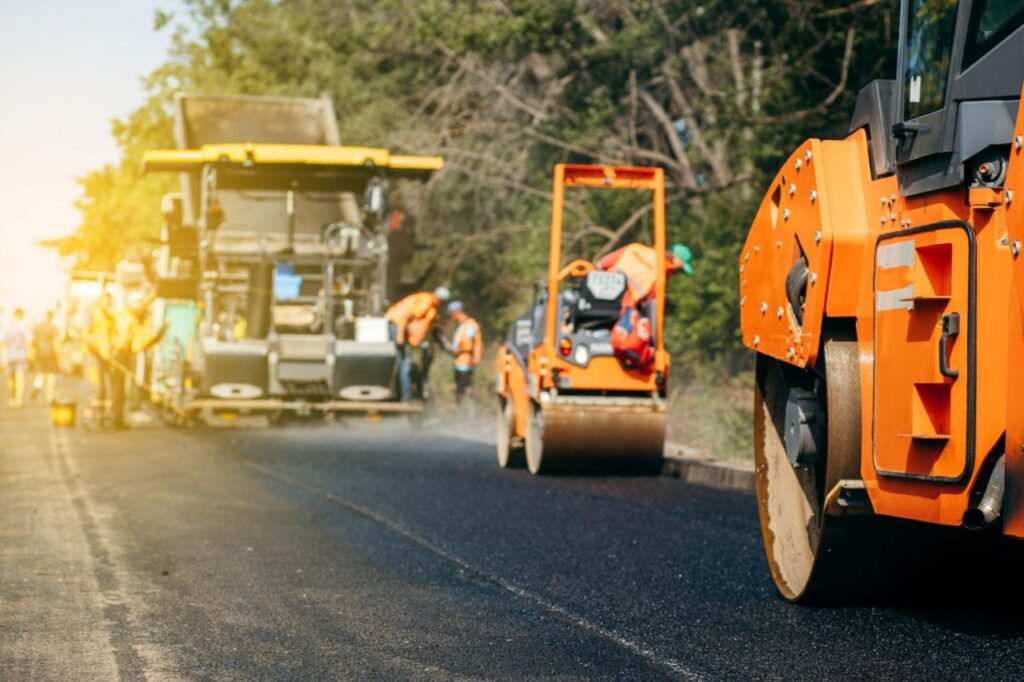Public Works Projects: Enhancing Infrastructure with CIPO’s Construction Management Software
Why Public Works Matter: Building the Foundations of Society
From the roads we travel on to the clean water we drink and the safe infrastructure that surrounds us, public works form the bedrock upon which our society stands. These initiatives do more than just provide essential services. They also stimulate local economies and create jobs, ensuring the smooth flow of goods and people, which, in turn, bolsters industries and trade. Public works investments pay dividends, making our communities more resilient and prosperous. When it comes to safety, public works play a critical role. They provide emergency response facilities, law enforcement infrastructure, and disaster-resilient structures. These projects serve as a shield against the unexpected, offering protection and peace of mind. Embracing sustainability is another hallmark of public works projects. They manage wastewater responsibly, promote green building practices, and champion renewable energy. This commitment to environmental stewardship safeguards our planet for future generations. Beyond infrastructure, public works initiatives bring communities together. They connect us physically and socially, fostering inclusivity and stronger bonds among neighbors. Public works, though often unnoticed, are the pillars of our society, silently supporting and enriching our lives.Economic Growth and Stability
Public works projects are crucial drivers of economic growth and stability within communities. These initiatives exert a profound influence that extends well beyond their immediate scope. When governments invest in infrastructure, they infuse funds into the local economy, igniting job creation and fostering business expansion. Construction projects require a diverse range of skilled workers, from engineers and architects to laborers, thus reducing unemployment rates and injecting capital into the hands of citizens. Moreover, the enhanced infrastructure resulting from these projects enhances the attractiveness of regions to businesses, encouraging investment and growth. Well-maintained roads, bridges, and public transportation systems facilitate the movement of goods and people, lowering logistical bottlenecks and transportation costs. This enables industries to operate with greater efficiency, promotes robust trade, and supports the flourishing of local businesses. This economic vitality not only promotes growth but also serves as a stabilizing influence in times of economic uncertainty. Public works investments additionally contribute to the long-term economic vitality of communities. By creating and maintaining essential infrastructure, governments reinforce the foundation on which businesses rely. For instance, dependable water and sewage systems are crucial for industrial processes, while well-maintained roads are essential for the timely delivery of goods. These factors ensure the sustained success and resilience of local businesses, thereby strengthening the overall economic stability of the region.Enhancing Quality of Life
Public works projects may not always grab the spotlight, but their impact on our daily lives is undeniable. These initiatives encompass a broad spectrum of infrastructure developments that significantly contribute to the betterment of our communities. From the well-maintained roads we traverse to the bridges that connect us to neighboring regions and the reliable water supply systems ensuring clean drinking water, public works projects quietly and steadfastly enhance our overall quality of life. Consider the critical role of well-constructed roads. Beyond mere convenience, they significantly reduce commute times, alleviate congestion, and diminish wear and tear on vehicles. This translates into more efficient transportation, less stress for residents, and potential cost savings. Additionally, well-illuminated streets contribute to enhanced safety during nighttime travel, instilling a greater sense of security within communities. Public transportation systems are integral to urban life. They alleviate traffic congestion, reduce environmental pollution, and offer commuters a more efficient means of travel. Their impact extends beyond convenience, promoting environmental sustainability by encouraging the transition from private vehicles to public transit options, thereby lowering greenhouse gas emissions. Access to clean and safe drinking water is a cornerstone of an improved quality of life, and public works projects play an indispensable role in ensuring this fundamental necessity. Reliable water supply systems deliver potable water to homes and businesses, upholding public health standards by preventing waterborne diseases. Adequate sewage and wastewater treatment facilities protect the environment and shield communities from contamination, supporting a healthier and higher quality of life. Public parks and recreational facilities, though sometimes overlooked, hold considerable importance. They provide spaces for exercise, relaxation, and community gatherings. These areas foster a sense of belonging, promote physical and mental well-being, and strengthen social cohesion within communities. Public works initiatives also encompass projects such as public libraries and cultural centers. These institutions serve as hubs for learning, cultural enrichment, and community engagement. They offer invaluable educational resources, support local artists, and host cultural events, further enhancing the quality of life in the areas they serve.Ensuring Safety and Resilience
Public works projects are instrumental in ensuring the safety and resilience of communities, providing a critical shield against unforeseen challenges and disasters. These initiatives encompass a broad spectrum of infrastructure developments designed to safeguard residents and support a community’s ability to bounce back in times of adversity. Emergency response facilities are a cornerstone of safety and resilience. Public works projects involve the construction and maintenance of police stations, fire stations, and other emergency response centers. These facilities are strategically located to provide rapid assistance during crises, ensuring that first responders can quickly and effectively address emergencies, whether they are natural disasters or public safety incidents. Resilience against natural disasters is a key focus of public works initiatives. Projects such as flood control systems, seawalls, and disaster-resistant infrastructure are designed to mitigate the impact of events like floods, hurricanes, and earthquakes. These measures protect lives and property and reduce the overall cost of recovery efforts, promoting the long-term stability of communities. Furthermore, public works projects support environmental sustainability, which is closely linked to safety and resilience. Initiatives like green building practices, renewable energy projects, and sustainable urban planning contribute to a community’s ability to adapt to changing environmental conditions. This proactive approach minimizes vulnerabilities to climate-related challenges and ensures that communities can withstand and recover from environmental shocks. Infrastructure maintenance is an integral component of public works projects’ commitment to safety and resilience. Regular maintenance and upkeep of critical infrastructure, such as bridges and roads, prevent unexpected failures and minimize disruptions. This proactive approach reduces the potential for accidents and injuries, enhancing the overall safety of communities.Safeguarding the Environment
Public works projects play a crucial role in safeguarding our environment, working silently to protect natural ecosystems and promote responsible resource management. These initiatives encompass a wide range of infrastructure developments designed to minimize environmental impact and ensure the well-being of both communities and the planet. Wastewater management is a cornerstone of environmental protection. Public works projects include the construction and maintenance of sewage treatment facilities and wastewater systems. These systems are vital for preventing water contamination, preserving aquatic habitats, and safeguarding the health of both ecosystems and communities. Public works projects also embrace green building practices, prioritizing energy efficiency, resource conservation, and waste reduction in construction. These practices not only reduce the environmental footprint of construction projects but also set a responsible precedent for sustainable development. Renewable energy initiatives are becoming increasingly integral to public works projects. Building sustainable energy infrastructure, such as wind farms and solar power facilities, not only reduces reliance on fossil fuels but also contributes to a cleaner, more environmentally friendly energy grid. These projects align with global efforts to combat climate change and reduce greenhouse gas emissions. Sustainable urban planning is a core focus of public works projects. Initiatives aim to create walkable, green communities with efficient public transportation systems, reducing urban sprawl, traffic congestion, and pollution. This approach prioritizes clean air, green spaces, and a healthier urban environment. Moreover, public works projects emphasize waste management and recycling efforts. Adequate waste disposal facilities, recycling centers, and efficient waste collection systems promote responsible resource utilization, minimize landfill waste, and encourage environmentally friendly waste management practices.Connecting Communities
Public works projects serve as bridges, both literally and figuratively, connecting communities and fostering a sense of unity and cohesion. These initiatives encompass a wide array of infrastructure developments that facilitate physical and social connections among people, thereby enriching the social fabric of our societies. One of the most visible aspects of connecting communities is the construction and maintenance of road networks. Roads and highways not only shorten travel times but also bridge geographical gaps, providing essential access to education, healthcare, and job opportunities. They enhance mobility, reduce isolation, and create pathways for people to connect with neighboring regions. Public transportation systems are integral to urban connectivity. Efficient and accessible public transit options reduce traffic congestion, making daily commutes smoother and more sustainable. They also provide affordable mobility choices, particularly for those without private vehicles, ensuring that everyone can access essential services and opportunities. In addition to physical connections, public works initiatives focus on social cohesion. Public parks, recreational facilities, and community centers provide spaces for people to gather, interact, and build relationships. These areas foster a sense of belonging, create opportunities for recreation and socialization, and contribute to a stronger sense of community identity. Moreover, public works projects extend their reach to educational and cultural institutions. Schools, libraries, and cultural centers are essential in promoting learning, supporting creativity, and encouraging community engagement. These institutions serve as hubs for personal growth and communal development, strengthening the bonds among community members.Conclusion
In a world that often seems divided, public works projects stand as bridges of connection, uniting communities both physically and socially. These initiatives, often unnoticed but profoundly impactful, encompass a spectrum of infrastructure developments that enhance our lives in numerous ways. From the roads we travel on to the public transportation systems that ease our commutes, public works initiatives ensure that geographical distances don’t become social barriers. They provide pathways to education, healthcare, and employment, fostering mobility and reducing isolation. Yet, their influence extends beyond the physical realm. Public parks, community centers, and recreational facilities offer spaces where people can gather, interact, and build relationships, nurturing a sense of belonging and community identity. Educational and cultural institutions, nurtured by public works, serve as hubs for personal growth and communal development. These spaces promote learning, support creativity, and encourage community engagement, strengthening the bonds among community members. In a world that often seeks connection and unity, public works projects serve as the unseen threads weaving our diverse communities into a unified and vibrant tapestry. They underscore the power of infrastructure to transcend boundaries and enrich our lives.Frequently Asked Questions
Public transportation systems provide efficient, affordable, and accessible means of travel, reducing traffic congestion, and connecting people to jobs, education, and essential services, fostering community connectivity.
Public parks and recreational facilities offer spaces for social interaction, gatherings, and recreational activities. They create a sense of community and belonging by providing opportunities for people to connect with their neighbors.
Schools, libraries, and cultural centers foster community engagement and learning opportunities. They serve as hubs for personal growth and bring residents together through educational and cultural activities.
Roads and highways physically link communities, reducing travel times and enabling access to essential services. They bridge geographical gaps, making it easier for people to connect with neighboring regions.
Public works initiatives, through infrastructure development and community spaces, promote social cohesion. They create environments where people can interact, build relationships, and strengthen community bonds, ultimately fostering a sense of unity.


One Comment
Key Challenges in Construction Management
[…] phases to the final construction and handover of the completed structure. The central figure in construction management is the construction manager, who acts as the linchpin between the client, the design and […]